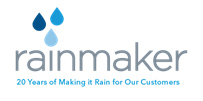What’s Hot: Total Profit Optimization. What’s Not: Room Rate Optimization
Experienced gaming and hospitality companies use the Total Customer Value approach to maximize profitability for the enterprise, not just the rooms division

ATLANTA, GA | Trying to maximize your hotel’s revenue without measuring and forecasting the total value of each guest to your entire property is like trying to take a photograph with the lens half covered – you are not seeing the whole picture. That is the judgment of a growing number of revenue management professionals who are using technology to measure Total Customer Value and employing it to set room rates and allocate availability to maximize revenue across a multiple profit-center enterprise.
Basing rates and availability on Total Customer Value began in casino properties where the rooms division was not the primary source of revenue. Revenue managers at companies like MGM Resorts, Boyd Gaming, Trump Entertainment Resorts, and Foxwoods utilize Total Customer Value analysis as an integral part of the room rate setting process. This approach can benefit any hotel operator who understands the importance of using total guest segment spend on food and beverage, entertainment, spa and other incidentals as the foundation of room price setting.
Traditional hotel industry revenue management practices base room rates on the source of business, such as Internet, wholesale, guest type (such as transient or corporate), and the availability on any specific day or date range. For example, when a date reaches 80 percent booking, a revenue management system may be configured to increase rates by $30. This traditional strategy will optimize room rate, but may actually cost a hotel money because it does not consider a guest’s value to property outlets and other profit centers, which in many hotels could be substantial. When viewed from the Total Guest Value perspective, it makes a stronger business case to fill rooms with guests who are forecasted to make the most revenue for the entire hotel, even if the property sometimes offers a discounted rate to attract them.
Optimize total guest profit – Not just room revenue
Since nearly all of Trump’s customers have a player card which records their guest spend on property, the company can track all customer transactions with its properties, and then use the data as a foundation to forecast each guest segment’s expected future value. “We use a specialized revenue management system called revolutionSM from The Rainmaker Group that pulls in a guest’s expected value from the player tracking system as well as data from other sources, then factors in comp-set data, demand forecasts, price-elasticity, and other variable influences to set the room rate,” said Bhandari.
“We can set our room rates to deliver optimal revenue to the entire enterprise while ensuring our highest valued gamers will always find an available room. To put it in simple terms, if a guest’s forecasted total value for a certain date is $200 and the ‘value threshold’ or ‘bid price’ for that day is $300, the room rate is calculated to make up the difference.”
Tightly focused marketing
Foxwoods is also using the system to optimize its marketing efforts. “We have a weekly yield meeting where I lay out my 90-day forecast with current rates and availability by segment,” said Rob Bunker, executive director of revenue management and call center operations. “The Foxwoods email marketing team and I work together to determine the promotions for each segment, focusing on the best way to draw them to Foxwoods on specific days that show soft availability. Our goal is to attract segments that normally would not come without an incentive, which optimizes our marketing investment by making our promotions more effective.”
Foxwoods’ promotions are precisely targeted incentives that drive incidental revenue from dining, spas and the gaming floor. The property rarely mandates a minimum length of stay, because average length of stay is only about 1.2 days. “I watch our ‘promoted demand’ pick-up from guests who are with us because of a promotion, and when I think we have recognized a sufficient number of these guests to meet my occupancy goals, I close the promotions down and fill the remaining rooms on un-incented guests,” Bunker said. “Occupancy is up and our forecast for summer is optimistic—thanks to intelligent promotions that are focused where and when they will have the greatest impact.”
Candace Henry
Content Director
Rainmaker, a Cendyn Company
